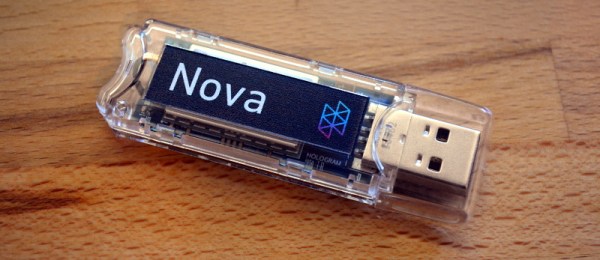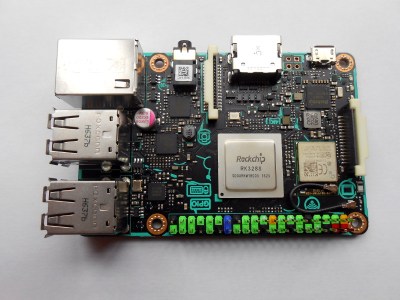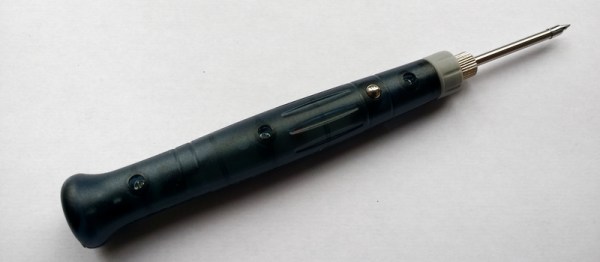In July we reported on the launch of the Hologram developer program that offered a free SIM card and a small amount of monthly cellular data for those who wanted to build connectivity into their prototypes. Today, Hologram has launched some new hardware to go along with that program.
Nova is a cellular modem in a USB thumb drive form factor. It ships in a little box with a PCB that hosts the u-blox cellular module, two different antennas, a plastic enclosure, and a SIM card. The product is aimed at those building connected devices around single-board computers, making it easy to plug Nova in and get connected quickly.
This device that Hologram sent me is a 3G modem. They have something like 1,000 of them available to ship starting today, but what I find really exciting is that there is another flavor of Nova that looks the same but hosts a Cat-M1 version of the u-blox module. This is a Low Power Wide Area Network technology built on the LTE network. We’ve seen 2G and 3G modems available for some time now, but if go that route you’re building a product around a network which has an end-of-life concern.
Cat-M1 will be around for much longer and it is designed to be low power and utilizes a narrower bandwidth for less radio-on time. I asked Hologram for some power comparison estimates between the two technologies:
AVERAGE current consumption comparisons:
Cat-M1: as low as 100 mA while transmitting and never more than 190 mA
Equivalent 3G: as high as 680 mA while transmittingPEAK current consumption comparisons (these are typically filtered through capacitors so the power supply doesn’t ever witness these values, and they are only momentary):
Cat-M1: Less than 490 mA
Equivalent 3G: As high as 1550 mA
This is an exciting development because we haven’t yet seen LTE radios available for devices — of course there are hotspots but those are certainly not optimized for low power or inclusion in a product. But if you know your ESP8266 WiFi specs you know that those figures above put Cat-M1 on a similar power budget and in the realm of battery-operated devices.
The Cat-M1 Nova can be ordered beginning today, should ship in limited quantities within weeks, with wider availability by the end of the year. If you can’t get one in the first wave, the 3G Nova is a direct stand-in from the software side of things.
I suspect we’ll see a lot of interest in Cat-M1 technology moving forward simply because of the the technology promises lower power and longer support. (I’m trying to avoid using the term IoT… oops, there it is.) For today, let’s take a look at the 3G version of the new hardware and the service that supports it.
Continue reading “Review: New 3G And Cat-M1 Cellular Hardware From Hologram”











 Liquid rocket propellant was in two parts: a fuel and an oxidizer. The combination is hypergolic; that is, the two spontaneously ignite and burn upon contact with each other. As an example of the kinds of details that mattered (i.e. all of them), the combustion process had to be rapid and complete. If the two liquids flow into the combustion chamber and ignite immediately, that’s good. If they form a small puddle and then ignite, that’s bad. There are myriad other considerations as well; the fuel must burn at a manageable temperature (so as not to destroy the motor), the energy density of the fuel must be high enough to be a practical fuel in the first place, and so on.
Liquid rocket propellant was in two parts: a fuel and an oxidizer. The combination is hypergolic; that is, the two spontaneously ignite and burn upon contact with each other. As an example of the kinds of details that mattered (i.e. all of them), the combustion process had to be rapid and complete. If the two liquids flow into the combustion chamber and ignite immediately, that’s good. If they form a small puddle and then ignite, that’s bad. There are myriad other considerations as well; the fuel must burn at a manageable temperature (so as not to destroy the motor), the energy density of the fuel must be high enough to be a practical fuel in the first place, and so on.








